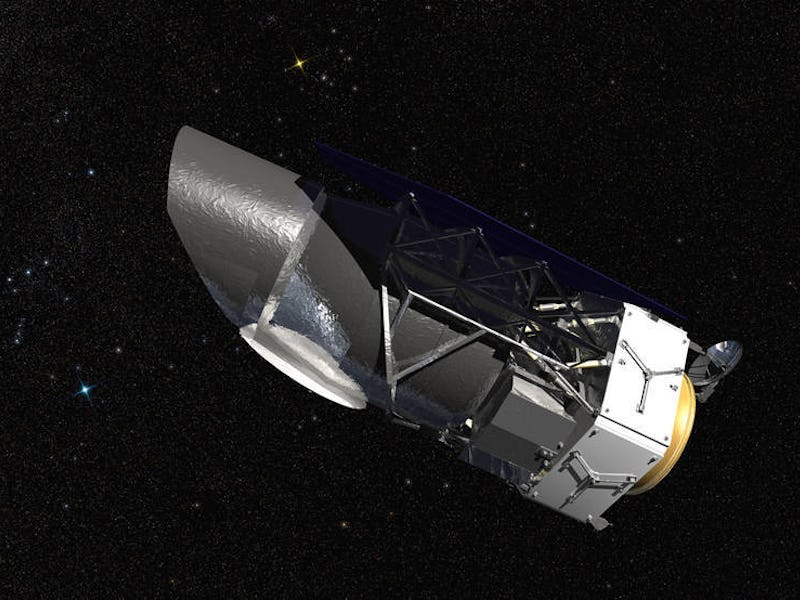NASA Is Building This Powerful Telescope to Unlock the Secrets of Dark Energy
Welcome to the future of peering into space.

NASA’s planned a telescope that promises to be as powerful as the Hubble, but with 100 times the field of view. Yes, the Wide Field Infrared Survey Telescope (WFIRST) represents a giant leap forward in telescopic technology, which to date, has provided either image quality or scale — but not both. If all goes well, it may unlock some of the greatest secrets of our universe.
“No matter how good a telescope that you build, it’s always going to have some residual errors,” explains Jeremy Kasdin, an engineering professor at Princeton. But this telescope will contain high-tech deformable mirrors that will allow scientists to correct for errors in the telescope, he adds. “It’s never been done in space before.”
The new telescope is set to launch in the mid-2020s. One of the first items on the astronomical agenda will be studying dark energy and dark matter. We don’t know much about dark energy, except that it’s theoretically why our universe expands at an increasing rate. Similarly, dark matter should exist based on observations of the universe, but we haven’t been able to classify it within known types of matter — or even find it. Astrophysicists generally agree that the universe is made up of about 68 percent dark energy, 27 percent dark matter, and only 5 percent normal matter.
With the help of WFIRST, astronomers can make finer observations and refine dark matter calculations. This could solve a great cosmic mystery: Do dark matter and dark energy exist within some modified version of Einstein’s theory of general relativity, or do they break the rules completely?
A coronagraph allows the telescope to image dim planets next to bright stars.
It will also allow us see the visible parts of the universe more clearly, in addition to probing its darkest corners. An instrument called a coronagraph will blot out the light from individual stars, improving images of the exoplanets in orbit.
“By blocking the light of the host star, the coronagraph instrument will enable detailed measurements of the chemical makeup of planetary atmospheres,” according to a statement from NASA. “Comparing these data across many worlds will allow scientists to better understand the origin and physics of these atmospheres, and search for chemical signs of environments suitable for life.”
If the search for dark energy and extraterrestrial life sounds like your type of jam, you’re in luck. Astronomers are already overwhelmed by the sheer amount of data telescopes pull in, and that problem will only worsen when WFIRST goes online. They’ll need a lot more help from citizen scientists willing to donate a bit of time to sift for clues among images of the stars. Happy hunting.